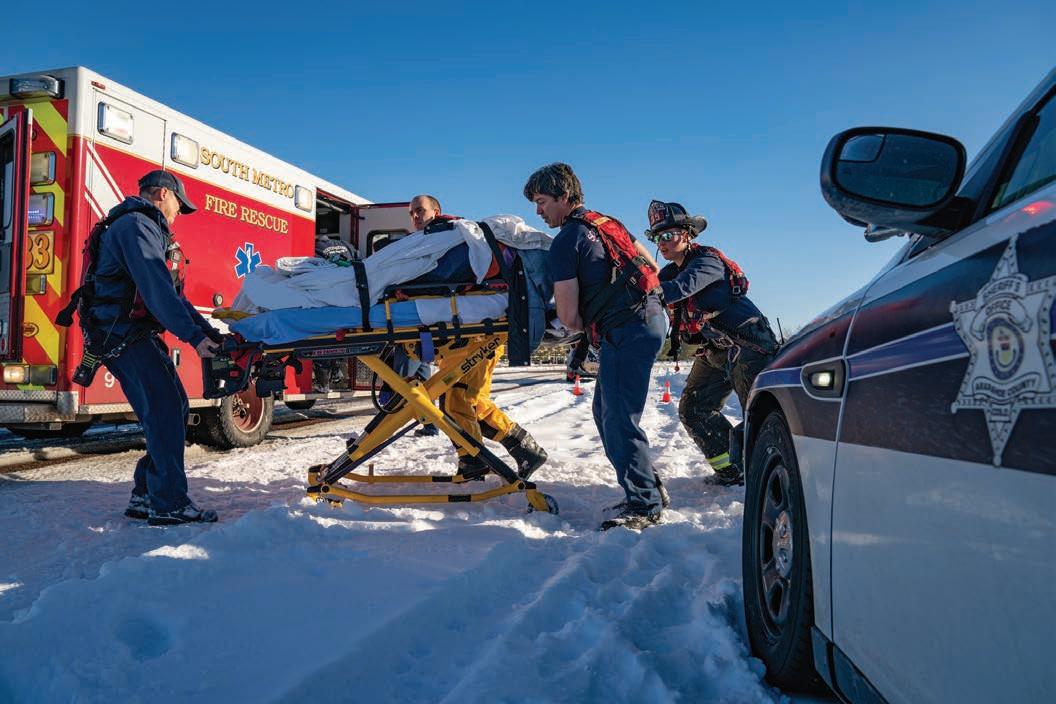
2 minute read
South Metro Fire Rescue service plan approved by 3 counties
560,000 receive services
BY ELLIS ARNOLD EARNOLD@COLORADOCOMMUNITYMEDIA.COM
A largely technical change in the records of South Metro Fire Rescue met approval from the elected leaders of the three counties over which the re ghting agency spreads, the agency says.
Residents in the south Denver metro area earlier this year received a letter from the agency about an “amended service plan.” e letter contained legal language and pointed to then-upcoming public meetings of county leaders who would vote to approve or deny the proposed changes.
e amendment doesn’t set the stage for any changes to how South Metro Fire Rescue operates, said Mike Dell’Orfano, a South Metro Fire o cial.
While it’s essentially a housekeeping matter, the document has value historically and in terms of transparency for a re agency that has grown to cover a large swath of the metro area, according to Dell’Orfano.
“How did our legal existence go from this small re protection district to what we are today? And how not only each of those entities came together but each of them grew independently before that also,” Dell’Orfano said. e agency’s history is “several decades of these several districts becoming bigger and then ultimately consolidating together.” e agency’s original service plan dates back to 1967, when the organization was known as Parker Fire Protection District. e old agency served about 2,000 residents over 105 square miles in portions of Arapahoe and Douglas counties.
Now, South Metro Fire Rescue covers 560,000 people over 285 square miles, stretching over much of the south metro area after many re protection agencies combined over the years to form today’s agency.
It now covers many cities and towns, including Bow Mar, Castle Pines, Centennial, Cherry Hills Village, Columbine Valley, Fox eld, ere’s historical value in neatly summarizing how the districts changed and then came together, Dell’Orfano said. For curious members of the public, the updated document also can provide other information clearly.
Greenwood Village, Littleton, Lone Tree and Parker, along with nearby unincorporated portions of Arapahoe, Je erson, and Douglas counties. (“Unincorporated” means an area doesn’t sit within a city or town.)
“A service plan is required for all special (government) districts, and you would hope that the document is pretty transparent when it comes to the services provided, how it’s being nanced, how it’s being governed and what’s the impact to people,” Dell’Orfano said.
He added that the updated plan “is more comprehensive and understandable than the previous one, which was just several county and court documents that we pieced together.”
When a person has to “do a research project” to gure out what the plan is, that’s not helpful, he added.
Amid recent public scrutiny of “special districts, mainly metro districts, I feel like this helps us keep up with current expectations,” Dell’Orfano said.
(Metro districts are a type of government entity that carries out some government functions, such as the Highlands Ranch Metro District that oversees some services in that community.)

The amendment is “just recognizing that we might be offering the same services, but over the past 55 years, the volume, the expertise, the types of incidents have all evolved,” Dell’Orfano, who serves as the agency’s chief government affairs officer, has said.
It also aims to take a new “snapshot” at the features of the fire district, such as the hazards, the number of cities and the population, he said.
Since the agency’s start decades ago, its original service plan was amended a couple times to account for the ability to take on debt








